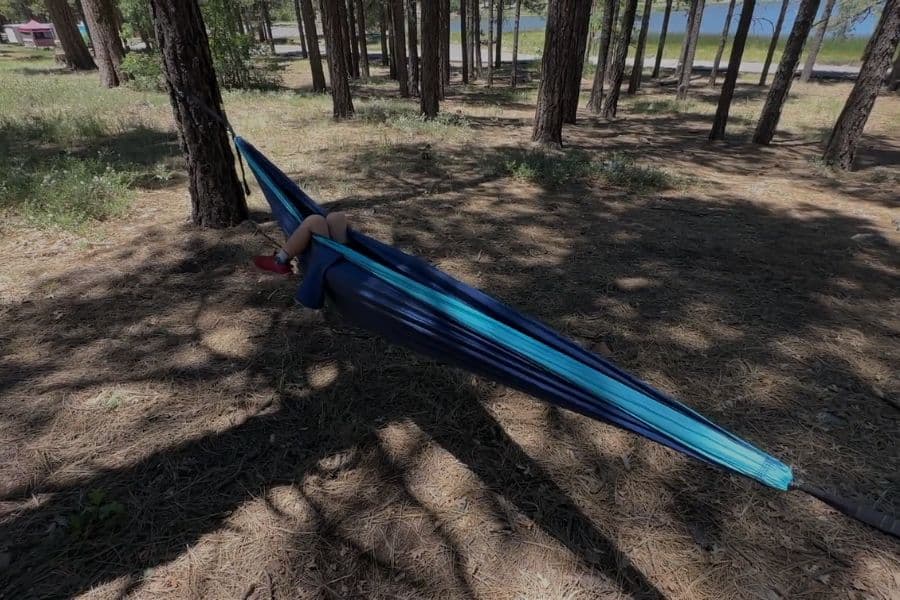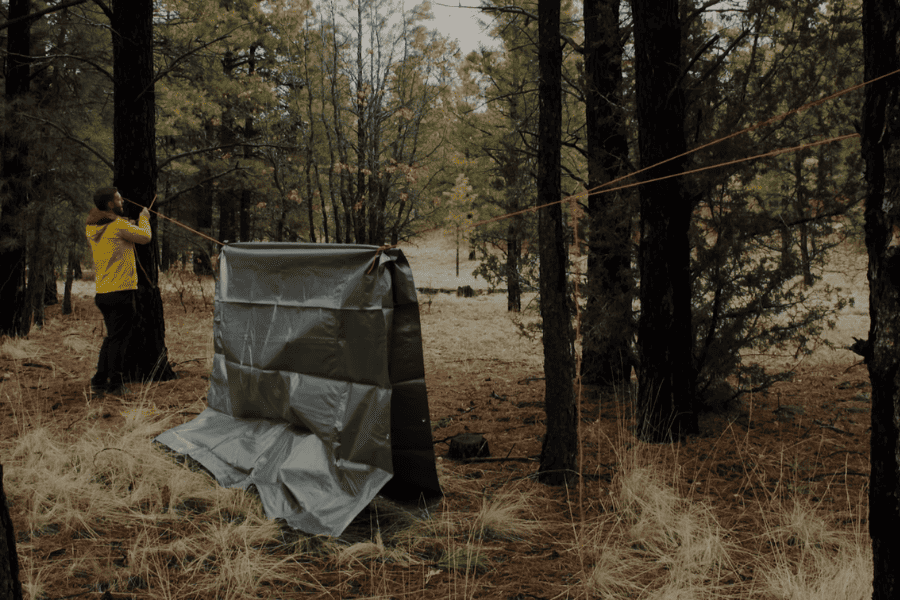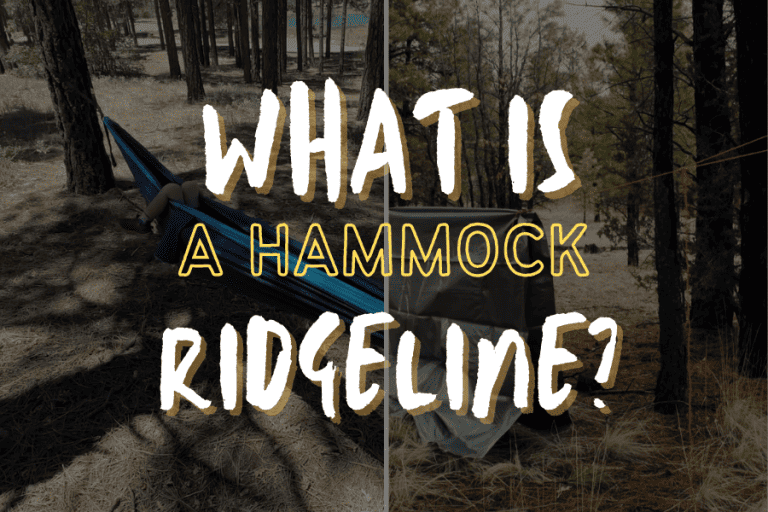New to hammock camping, or thinking of making the switch?
One of the first things you’ll want to look into is a ridgeline.
So, what exactly is a hammock ridgeline?
Do you really need one?
And, how do you set one up?
I’m here to answer all of these questions, and tell you everything you need to know about ridgelines – both structural and non-structural, fixed and adjustable.
So, ready to find out more?
Let’s drive straight into it!
Table of Contents
ToggleWhat Is A Hammock Ridgeline?

A ridgeline is a piece of cord that runs across the top of your hammock, between the two suspension points on either end.
Hammock ridgelines serve two purposes:
- They give you the ability to adjust the sag of your hammock
- They give you a place where you can hang a tarp over your hammock
But don’t get it twisted.
You can just hang one ridgeline up and use it for both of these purposes.
See, to adjust the degree to which your camping hammock sags, you’ll need a structural ridgeline. And, to hang up a hammock tarp to protect yourself from the elements, you’ll need a non-structural ridgeline.
A structural ridgeline attaches to the ends of the actual hammock. A non-structural ridgeline, on the other hand, attaches to the tree the same way the hammock does.
That’s why a non-structural ridgeline doesn’t affect how your hammock hangs. It’s simply there so that you can hang things off of it. This might be a tarp, but could also be your clothes, or bits and pieces of equipment.
Structural ridgelines, on the other hand, allow you to adjust the sag of your hammock so that you can find that perfect smiley face sag. This is vital if you want to get a good night’s sleep in a hammock, because it lets you sleep diagonally across the hammock.
Do You Really Need A Ridgeline?

Well, technically you don’t.
In fact, if you’re only using your hammock to lounge around during the day, you can definitely get away with not having either type of ridgeline to go along with it.
However, if you’re sleeping in your hammock, it’s a whole other story.
I’d definitely recommend that all hammock campers equip themselves with both a structural and a non-structural ridgeline.
Why?
Well, like I said, getting the right amount of sag is essential to sleeping comfortably in your hammock. If it’s too tight, you won’t be able to position yourself at a diagonal angle, and you’ll be in for a rather uncomfortable night.
So, that’s the reason you want to have a structural ridgeline. What about a non-structural one?
Well, that’s pretty self explanatory. You’ll need one to hang a tarp up over your hammock. A tarp will keep you covered and protect you from the sun, rain and wind.
You never know when the weather will change, so even if you’re not expecting any bad weather, it’s always a good idea to come prepared. In the case of hammock camping, a tarp is definitely your best line of defense against the elements. And to hang one up – you’ll need a ridgeline.
Setting Up A Hammock Ridgeline
There are a few things you need to keep in mind when you’re setting up your ridgeline.
First of all, you want to make sure you’re using the right type of cord. It’s best to go for a load bearing cord that doesn’t stretch. Polyester and dyneema are both solid options. Paracord, on the other hand, is usually too stretchy and should be avoided.
The next thing you should take into account is the length of the cord. For a structural ridgeline, the right length will be around 83% of the length of your hammock. For a non-structural ridgeline, you just need to be able to stretch it between the trees your hammock suspension is tied to.
Once you’ve got the right length, tie your ridgeline to your hammock using a secure knot. Some examples of suitable knots for the job include a bowline knot, a prusik knot and a half hitch, and a trucker’s hitch.
And, finally, you’ll need to find the right amount of slack. You want your ridgeline to be relatively tight, but not too tight. It needs to have just a little bit of slack to get that perfect hang.
Oh, and once you’ve attached the ridgeline to your hammock, there’s no need to detach it when you’re taking the hammock down. Just leave it hooked on there, ready to go for the next time.
Fixed Vs Adjustable
If you get a fixed ridgeline, you need to make sure that it’s the correct length.
Like I said, this will be around 83% of the length of your hammock. So, if your hammock is 11 ft long, a fixed ridgeline anywhere between 100 and 110 inches in length should do the trick.
However, if your hammock isn’t a classic length, and you can’t find a fixed ridgeline that fits it, go for an adjustable ridgeline. This is usually referred to as a whoopie sling. It lets you adjust the length of the ridgeline so you can set it up perfectly no matter which hammock you’re using.
What Now?
Although you don’t absolutely need a hammock ridgeline, it’s definitely a very useful accessory to have if you’re going hammock camping.
In fact, both a structural and a non-structural ridgeline will greatly improve your hammock camping experience. A structural ridgeline will help you get that perfect sag for a comfy sleep. And a non-structural ridgeline will allow you to set up a tarp for weather protection.
For that reason, I’d definitely recommend adding a couple of ridgelines to your inventory before you head off on your next hammocking adventure.
Wondering what else you need for a successful hammock camping trip?
Check out our hammock camping gear list for a guide to all the essential and additional equipment you might want to get for your setup.


